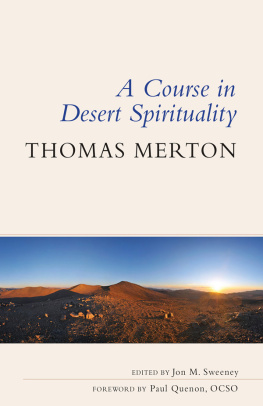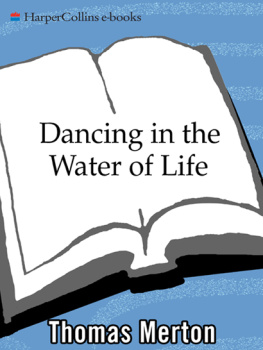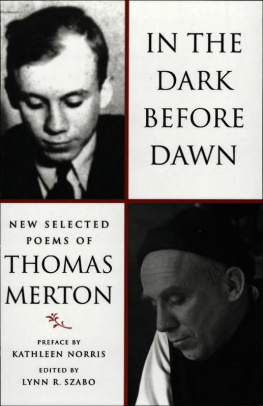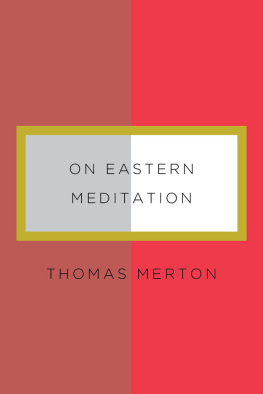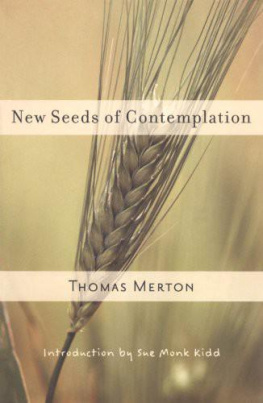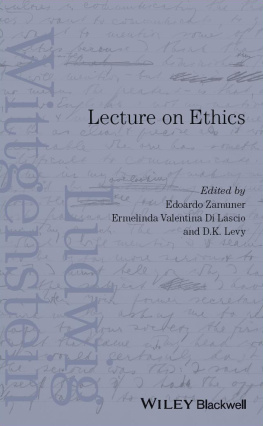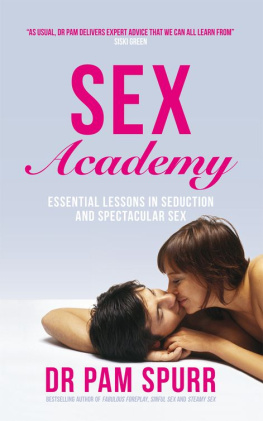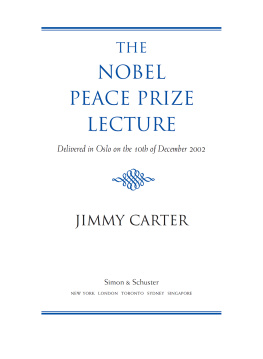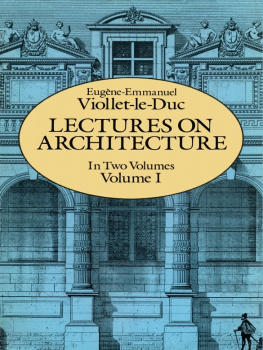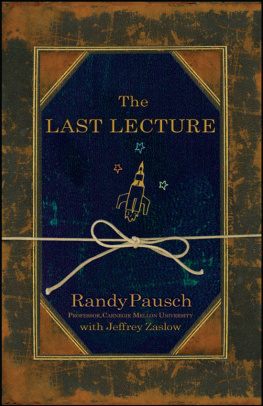
A Course in Desert Spirituality offers keen insight into the wisdom of early Christian mystics like St. Gregory of Nyssa, John Cassian, and Evagrius Ponticus. It makes the Desert Mothers and Fathers come alive. But it also reveals much about the spiritual heart of Thomas Merton himself.
Carl McColman, author of The Big Book of Christian Mysticism and The Unteachable Lessons
As explored in this book, Christian tradition is embedded in desert spirituality. Mertons enduring voice takes us on a journey into the desert, allowing us to meet many Desert Mothers and Fathers, and grow in our own sense understanding about desert spirituality. In true Merton form, this book prompts insights and self-reflection. Another gift to the world in the Merton canon.
Cassidy Hall, author of Notes on Silence and director of Day of a Stranger
This fine book is filled with great insight and inspiration! Isnt it amazing that in this materialistic and superficial world, early desert spirituality would have so much to teach us today? And even more because it is filtered through the mind and heart of a true master teacher from our own time! This is very good food indeed.
Fr. Richard Rohr, OFM, Center for Action and Contemplation, Albuquerque, New Mexico
Cover design by Tara Wiese. Photo courtesy of Wikimedia Commons.
2019 The Merton Legacy Trust. All rights reserved.
2019 Editors prologue, edited compilation, and backmatter, Jon M. Sweeney.
Published by Liturgical Press, Collegeville, Minnesota. All rights reserved. No part of this book may be used or reproduced in any manner whatsoever, except brief quotations in reviews, without written permission of Liturgical Press, Saint Johns Abbey, PO Box 7500, Collegeville, MN 56321-7500. Printed in the United States of America.
Library of Congress Cataloging-in-Publication Data
Names: Merton, Thomas, 19151968, author. | Sweeney, Jon M., 1967editor.
Title: A course in desert spirituality : fifteen sessions with the famous Trappist monk / by Thomas Merton ; edited by Jon M. Sweeney.
Description: Collegeville, Minnesota : Liturgical Press, [2019] | Includes bibliographical references and index.
Identifiers: LCCN 2018048539| ISBN 9780814684733 (pbk.) | ISBN 9780814684986 (eISBN)
Subjects: LCSH: Desert Fathers.
Classification: LCC BR67 .M467 2019 | DDC 271dc23
LC record available at https://lccn.loc.gov/2018048539
The world pursues us into the desert and seeks to win us back. If we have anything in us belonging to the world, the world has a claim on us. (Lecture 15)
Contents
Paul Quenon, OCSO
Early Christian Spirituality (First and Second Centuries)
|
Aberrations in the Early Centuries
|
The Christian Teachers of Alexandria
|
St. Anthony of the Desert
|
St. Pachomius and the Cenobites
|
St. Basil of Caesarea
|
Other Cappadocian Fathers: The Two Gregories
|
Palestinian Monasticism and St. Jerome
|
The Community of St. Melania
|
Monasticism in Mesopotamia and Syria
|
St. Macarius and Pseudo-Macarius
|
Evagrius Ponticus on Prayer
|
Master of the Spiritual Life: Cassian
|
The Conferences of Cassian
|
Philoxenos of Mabbug
|
Foreword
Paul Quenon, OCSO
T he Desert Fathers were a special delight to Thomas Merton in his wide reading and research of the Church Fathers. One well-known photograph of him, by John Howard Griffin, shows him seated over a large tome, in a denim jacket, which was standard winter wear for all the monks; he is reading the volume and laughing at it. Upon closer inspection, you can discern the letters on the page were in a foreign language and one could easily conjecture it was the Migne Latin edition of the Apothegmata, the Sayings of the Desert Fathers.
Among the variety of conferences I attended by Fr. Louis in the Novitiate, the funniest were those about the Desert Fathers. The hermits odd behaviors, their blunt, simple answers to spiritual seekers, were evocative of the short, salutary words of Jesus himself. Words practical, unexpected, maybe off-putting like: Keep to your cell, and your cell will teach you all things. Or, Fuge, silere et tachere. Flee, keep quiet and be silent. The exotic names of these peculiar men began to ring in our heads, as well: Paphnutius, Arsenius, Pachomius. We heard stories of their quasi-prophetic behavior, such as one hermit who walked into the gathering of monks as they deliberated on the eviction of one brother who had greatly sinned. Upon his shoulder this wise Father carried a bag of sand with a hole in the bottom, trailing sand across the floor. He declared: I am another sinner and I leave a trail of sins behind me like this sand. After that, they decided to forgive and receive the wayward monk back into their midst. Unforgettable.
One of the chief concerns in this literature is the discernment of spirits; how do you know what inspirations come from God and what comes from the devil? John Cassian tells the sad story of Brother John who decided he would prove his faith by throwing himself down a well and show he suffered no harm. That he straightway didand perished.
Merton, in The Wisdom of the Desert, his translation of the Sayings, compared such tales to the Zen Buddhist masters, and one could as well include Shams Tabrizi, as recounted by Rumi. But one need look no further than the subsequent literature of the Greek and Cappadocian Fathers to see further flowering of that seminal inspiration of the desert monks: most remarkably Evagrius Ponticus, Basil, Gregory of Nazianzus, and extending westward, John Cassian and St. Benedict. While much of this later writing wafted on lengthy wings of rhetoric rather than on cryptic, monastic brevity, at its core it came from men envious of the simple, rustic lives of these solitaries. Most of the authors found in this current volume were wannabe monks, and probably at heart they really were, while being caught up in the complexities and conflicts of a church suffering growing pains in a Hellenic culture.
None of this history was unsuitable for us fledgling novices in a modern monastery, to sample and taste. St. Benedict, in his Rule for monks, recommends such readings in preference to his very own little rule for beginners. In todays turbulent world many women and men in Europe, America, and Latin America are looking toward Benedictine and earlier traditions for a guide on how to live. They feel an urgent need for discernment of spirits on many fronts, personal, ecclesiastical, and political. How can we detect what is motivating peoplemyself, others, and those big faces on the TV screen? The path to purity of heart, to unselfish, authentic, and guileless intentions of the mind and will, were understood by these wise and simple men and women of Egypt, Syria, and Palestine. Here they are carefully spelled out again for our guidance.
Editors Prologue
A s with this books predecessor, A Course in Christian Mysticism, the volume you are holding originated in talks Thomas Merton gave to the novices at the Abbey of Gethsemani. And as with the earlier book, A Course in Desert Spirituality is redacted from previously published, scholarly editions.
Both Courses are attractive to those of us who live outside monasteries because of Mertons brilliant ability to survey the key figures and synthesize their writings, inspiring his listeners and readers with what it means for the spiritual life. But this

